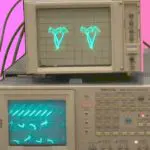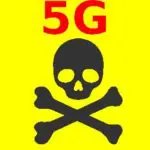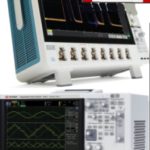A team from the University of Central Florida claim to have devised instrumentation that effectively functions as an optical oscilloscope. The point of the new instrumentation is to measure transient optical fields. The research team says its new technique is capable of resolving the electric field oscillations of a single-shot laser light pulse with sub-femtosecond resolution. Previous tools for measuring light fields could resolve only an average signal associated with a pulse of light and specifically not qualities of a signal modulating the light pulse.
The primary requirement for characterizing an optical waveform is an ultrafast gate that can operate faster than the half-cycle duration of the field oscillation to be measured. The usual approach to synthesizing such a gate uses few-cycle sampling pulses with much shorter wavelengths than the fields to be characterized. However, the UCF researchers used the nonlinear photocurrents generated in a silicon-based image sensor by intense mid-infrared pulses to synthesize an ultrafast gate.

The UCF approach is an extension of what’s called TIPTOE (tunneling ionization with a perturbation for the time-domain observation of an electric field). Tiptoe uses tunneling ionization as a detection mechanism for a modulation applied to a laser pulse. (As a brief review, tunnel ionization is a process in which electrons in an atom pass through the potential barrier and escape from the atom, usually in an intense electric field.) A Tiptoe setup separates a laser pulse into two pulses, the fundamental pulse and the modulated pulse. The fundamental pulse is further divided into two identical pulses by a beam splitter. One of these is superposed with the signal pulse by another beam splitter. The fundamental pulse superposed with the signal pulse then gets focused between two parallel metal plates to obtain what’s called an ionization yield which gets compared to the ionization yield produced by the fundamental pulse without the modulation pulse. The electrons and ions produced by the tunneling ionization between the metal plates are sent to current amplifiers which allow the peaks of the ionization signal for every pulse to be recorded by data acquisition boards.

The UCF optical oscilloscope replaces the parallel metal plates used to gage ionization yield with a CMOS light sensor. Also, the UCF setup bounces the fundamental pulse and the perturbation pulses off a concave cylindrical mirror into the CMOS sensor. Concave cylindrical mirrors are used for focusing light to a thin line without chromatic aberration. In the optical oscilloscope, it basically maps the time delay between an intense excitation and weak perturbing pulse across the spatial coordinates of the image sensor.
The UCR scheme works for the mid-IR light range. But researchers say different detector technology will be required for extending the technique to the near-infrared and potentially the visible spectrum.
The group described their work in the journal Nature Photonics.






Leave a Reply
You must be logged in to post a comment.